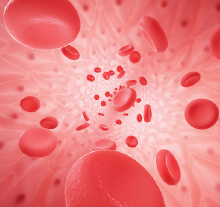Journal Digest
More Screen Time Correlates With Depression, Suicidal Thoughts in Teen Girls

Increased screen time may have contributed to the growing number of girls aged 13 to 18 who died by suicide between 2010 and 2015, according to a study in Clinical Psychological Science. The rate of suicide for girls aged 13 to 18 rose 65 percent during this time.
Researchers at San Diego State University (SDSU) and Florida State University analyzed data from two large, national surveys: the Monitoring the Future survey and the Youth Risk Behavior Surveillance System along with statistics on suicide deaths from the Centers for Disease Control and Prevention.
In addition to the increased suicide rate among adolescent girls, the authors found an increase of girls reporting depressive symptoms (from 16.74 percent in 2010 to 26.40 percent in 2015, a 58 percent increase) and suicide-related outcomes such as feeling hopeless or thinking about suicide (from 39.82 percent in 2009 to 45.39 percent in 2015, a 14 percent increase).
These negative feelings correlated with electronic device and/or social media use. For example, 48 percent of teens who spent five or more hours a day on electronic devices reported at least one suicide-related outcome, compared with 33 percent of those who spent around two hours a day and 29 percent of those who spent less than an hour a day on such devices.
“Although we can’t say for sure that the growing use of smartphones caused the increase in mental health issues, that was by far the biggest change in teens’ lives between 2010 and 2015,” said lead author Jean Twenge, Ph.D., of SDSU in a press release.
Twenge J, Joiner T, Rogers M, Martin G. Increases in Depressive Symptoms, Suicide-Related Outcomes, and Suicide Rates Among U.S. Adolescents After 2010 and Links to Increased New Media Screen Time. Clin. Psychological Sci. November 14, 2017.
Researchers Create Replica Of Blood-Brain Barrier Using Stem Cells

The blood-brain barrier is an important line of defense, but it also prevents many therapeutics from reaching the brain. While several research groups have developed rudimentary models of the blood-brain barrier using cultured human cells, these models can be hard to reproduce at the levels needed for drug screening.
In a report published in Science Advances, a team at the University of Wisconsin-Madison outlined the steps they took to create a replica of the human blood-brain barrier using human pluripotent stem cells.
To start, the authors identified key signaling pathways that guide the process of stem cell maturation into the endothelial cells that make up the blood-brain barrier—namely, the Wnt and retinoic acid pathways. Next, they developed a step-by-step process to coax the stem cells to form the blood-brain barrier using these signaling molecules given at the appropriate stage of the maturation process.
The authors found that the mature endothelial cells generated by this process displayed the important properties of a functional, selective barrier. Notably, the cells displayed a high trans-endothelial electrical resistance, which is a widely used measurement to test the integrity of biological membranes.
“[T]his defined BMEC [brain microvascular endothelial cells] differentiation method has the potential to be a powerful and robust tool for preclinical studies of pharmaceutical transport through the BBB [blood-brain barrier],” the authors wrote.
Qian T, Maguire S, Canfield S, et al. Directed Differentiation of Human Pluripotent Stem Cells to Blood-Brain Barrier Endothelial Cells. Sci Adv. 2017; 3(11): e1701679.
Genetic Risk for Schizophrenia May Affect Response to Lithium

While lithium is recommended as first-line maintenance treatment for bipolar affective disorder, patient response to the medication varies (some 30 percent of patients are only partially responsive, and more than one-fourth show no clinical response).
A study in JAMA Psychiatry suggests people with bipolar disorder who fail to respond fully to lithium may have something in common: a high number of schizophrenia risk genes.
The research team calculated a polygenic schizophrenia risk score using data from a previous genetic study of over 30,000 people with schizophrenia. They next assessed 2,586 genetic samples of bipolar patients and found that the degree of lithium treatment response—measured using the established ALDA scale—was inversely related to the polygenic risk score.
A closer analysis identified 15 genetic loci that are likely candidates to have overlapping effects on lithium response and schizophrenia susceptibility. Based on their location, these loci are likely involved in the immune system and inflammation.
The authors cautioned that the schizophrenia risk scores contribute only a modest amount to the wide range of responses seen with lithium treatment. In addition, the ALDA scale is a retrospective measurement tool; therefore, studies that can prospectively measure clinical responses to lithium are needed.
International Consortium on Lithium Genetics (ConLi+Gen). Association of Polygenic Score for Schizophrenia and HLA Antigen and Inflammation Genes With Response to Lithium in Bipolar Affective Disorder: A Genome-Wide Association Study. JAMA Psych. November 9, 2017. [Epub ahead of print]
Chronic Fatigue, Gulf War Illness Said to Be Distinct Disorders

Researchers at Georgetown University Medical Center have found distinct molecular signatures in chronic fatigue syndrome (CFS) and Gulf War Illness (GWI)—two somatic disorders that have similar profiles of pain, fatigue, cognitive dysfunction, and exertional exhaustion.
As described in Scientific Reports, the researchers obtained spinal fluid from 22 patients with GWI, 43 with CFS, and 22 sedentary controls (healthy but do not exercise) before the participants exercised and again 24 hours after exercising on a stationary bicycle. Samples taken before exercise showed that all participants had similar levels of microRNAs (miRNAs)—metabolites that reflect gene expression patterns in the brain. In contrast, miRNA levels in spinal fluid were significantly different between the groups after exercise.
The miRNA analysis also showed two distinct signatures in the GWI participants, confirming some previous research that there may be two variants of this disorder. The metabolic differences correlated with whether the GWI patients developed tachycardia (an elevated resting heart rate) following their exercise.
Study co-author James Baraniuk, M.D., noted that the miRNA changes in their analysis were also different than results seen in other studies that assessed people with depression and Alzheimer’s disease, further suggesting that CFS and GWI are distinct diseases and not somatic components of another disorder. ■
Baraniuk J, Shivapurkar N. Exercise-Induced Changes in Cerebrospinal Fluid miRNAs in Gulf War Illness, Chronic Fatigue Syndrome, and Sedentary Control Subjects. Sci Rep. 2017; 7(1):15338.



